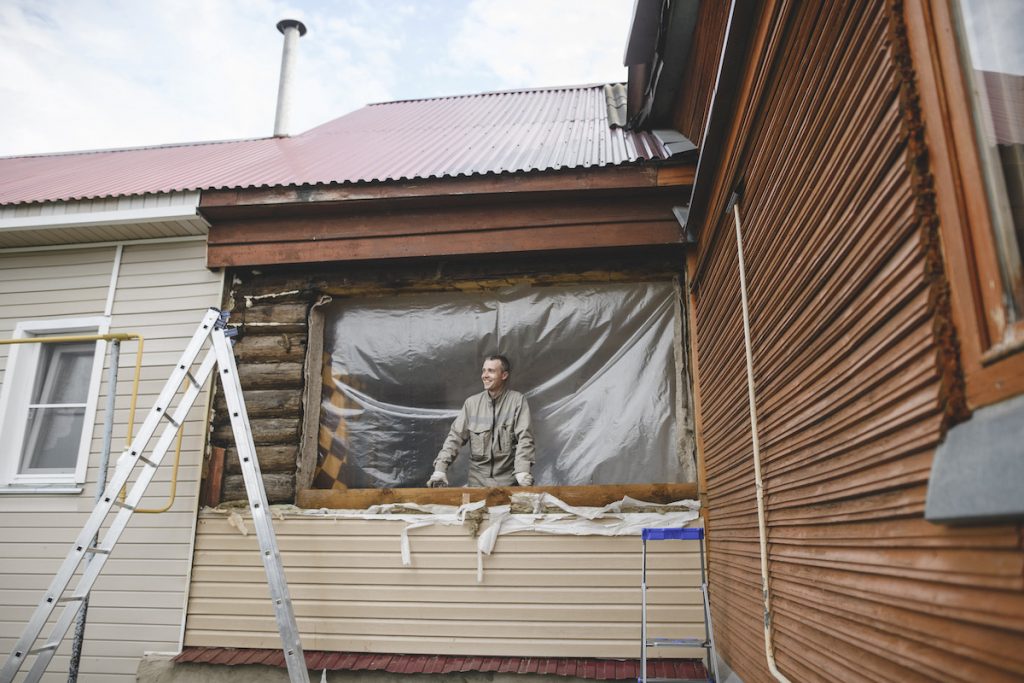
Are Low Efficiency Ratings on Your Windows Costing You?
As a Florida resident, you know that your air conditioning unit is critical to your year-round comfort, but did you know that your windows could be costing you hard-earned dollars, even if you’re on the conservative side of A/C energy usage? According to the DoE, “Heat gain and heat loss through windows are responsible for 25% – 30% of residential cooling and heating energy use.”
This means that you could be wasting energy that’s causing you a higher-than-necessary utility bill each month. When your windows have things like poor window efficiency ratings or an air leak, your air conditioner is constantly working that much harder to replace the cool air escaping from your faulty windows.
So how can you fix this? Let’s explore how window efficiency ratings work and why they matter for your energy bill as a Florida homeowner.
How Energy-Efficient Windows Work to Lower Your Costs

Energy-efficient windows make a significant difference in reducing heat gain inside your home year-round in Florida, but what makes a window an energy-efficient one?
There are several characteristics that energy-efficient windows have that work to keep your sunny Florida home at its optimal temperature when you’re cranking the air conditioner down to stay cool and comfortable. But you shouldn’t have to throw even more of your money out the window (literally) on energy you kind of already paid for . Homes can gain heat through a variety of instances including, direct conduction/convection heat transfer through the window and/or framing, thermal radiation, solar radiation and air leakage.
3 Properties to Look for in Energy-Efficient Ratings
There are three properties that can be measured and rated when it comes to energy-efficient windows. Here are the factors you’ll want to look for in window efficiency ratings so you can cool your home and get the most bang for your buck while you do so.
- The NFRC U-Factor Label and U-Factor
Every window has an NFRC U-Factor label. This label is important because it indicates how well the window prevents heat from escaping. The U-Factor often times refers to the non-solar heat flow of the glass or glazing of the window, while NFRC U-Factor label (National Fenestration Rating Council) contains more information regarding the entire window’s performance.
The lower the U-Factor rating on your window, the more energy-efficient your window is because it is more resistant to thermal transfer. While the U-Factor can take any value, typically speaking, for windows it will range from 0.20 to 1.20.
- Solar Heat Gain Coefficient (SHGC)
The SHGC measures how well a window can resist unwanted heat gain. Similar to the U-Factor, this number should also be relatively low if you want to save on the year-round cooling of your home.
In Florida, you’ll want to select windows with an SHGC of 0.40 or less. The reason you should opt for windows with a lower SHGC number is because significantly less solar heat will come through the windows into your home, plus — a lower SHGC provides greater shading ability.
- Air Leakage
You may have noticed a draft coming through your windows, but this number can also be found on the NFRC label. The air leakage rating measures how much air will enter a room through the window. Once again, the lower the number, the fewer drafts you’ll experience. But maybe you don’t have the label anymore, how do you check for drafty windows? While there are several cost-free ways to check for a window draft, here’s one classic way you can check right now:
The Candle Test:
- Light a candle and bring it close to where you may suspect there is an air leak.
- Hold or place the candle near the window seams. You’ll want to prevent any unintended movement, so we suggest placing the candle on the window sill or a very nearby table.
- Watch for any air movement: If any air movement comes from the direction of the window, you’ve got a draft.
How to Check Your Window Efficiency Ratings

Before deferring to tools, you may be able to determine whether or not you should replace your windows by assessing them with the naked eye. To do this, stand outside your home and examine the windows from the outside in. You may notice areas where the caulking has disintegrated, leaving gaps between your window frame and your home’s siding. This could be the culprit of your high utility bill — the outside air coming in due to windows that desperately need to be replaced with an energy-efficient alternative that could save you thousands of dollars in the long term.
That being said, it isn’t always as apparent that you need to replace your windows. If you believe your windows could be costing you, here are a few tools you can use to address your suspicions.
Infrared Laser Thermometer:
An infrared thermometer can give you a highly accurate reading of the temperature around your window frame, and it’s simple to use! Simply point the tool towards your window (not directly on it) and push the button to get a temperature reading to determine if you have an air leak coming from your window. If the temperature by your window is reading differently than the temperature in the rest of your home, you may need to further investigate or possibly replace your windows with energy-efficient ones that have a lower U-Factor rating.
U-Value Kits:
Note: Before using this tool, be sure that the outside temperature is warmer than the inside temperature.
You can use a U-Value kit to easily measure how effective a material is as an insulator, including your windows! All you need to do is place the sensors on the interiors and exteriors of your windows, then connect them to the data logger (provided) and computer to complete the connection process. After this three-step process, the u-value kit will measure the temperatures, inside and out, allowing you to see just how much cool air you could be losing in your home.

Unsure About Your Window Efficiency Ratings? Florida PACE Can Help
In Florida, we experience higher-than-normal temperatures throughout the year that generally require more cooling in our homes than others in more northern states almost every day out of the year. Your windows could be causing you a higher utility bill, but the good news is that this type of home improvement can be completed and financed for you through Florida PACE funding.
If you’re still unsure about your window efficiency ratings, Florida PACE is here to help. We provide window repairs and replacements and can help you identify which of these options will be most cost-effective for your home and utility bill.
When you work with Florida PACE on your home improvement project, you enter into a partnership with us — not a scary, one-sided contractual agreement you feel pressured into. You’ll never have to prove a minimum credit score to qualify or put money down to begin your project. Plus, you only begin your payment plan once your project is completed and you’re 100% satisfied with the results.
Get started on increasing your window’s energy efficiency and decreasing your utility bill today by contacting us to help you decide if Florida PACE is the right choice for funding your window repair or replacement. Or, take our quiz to help you evaluate if you need a professional repair, a full replacement or can simply DIY.



